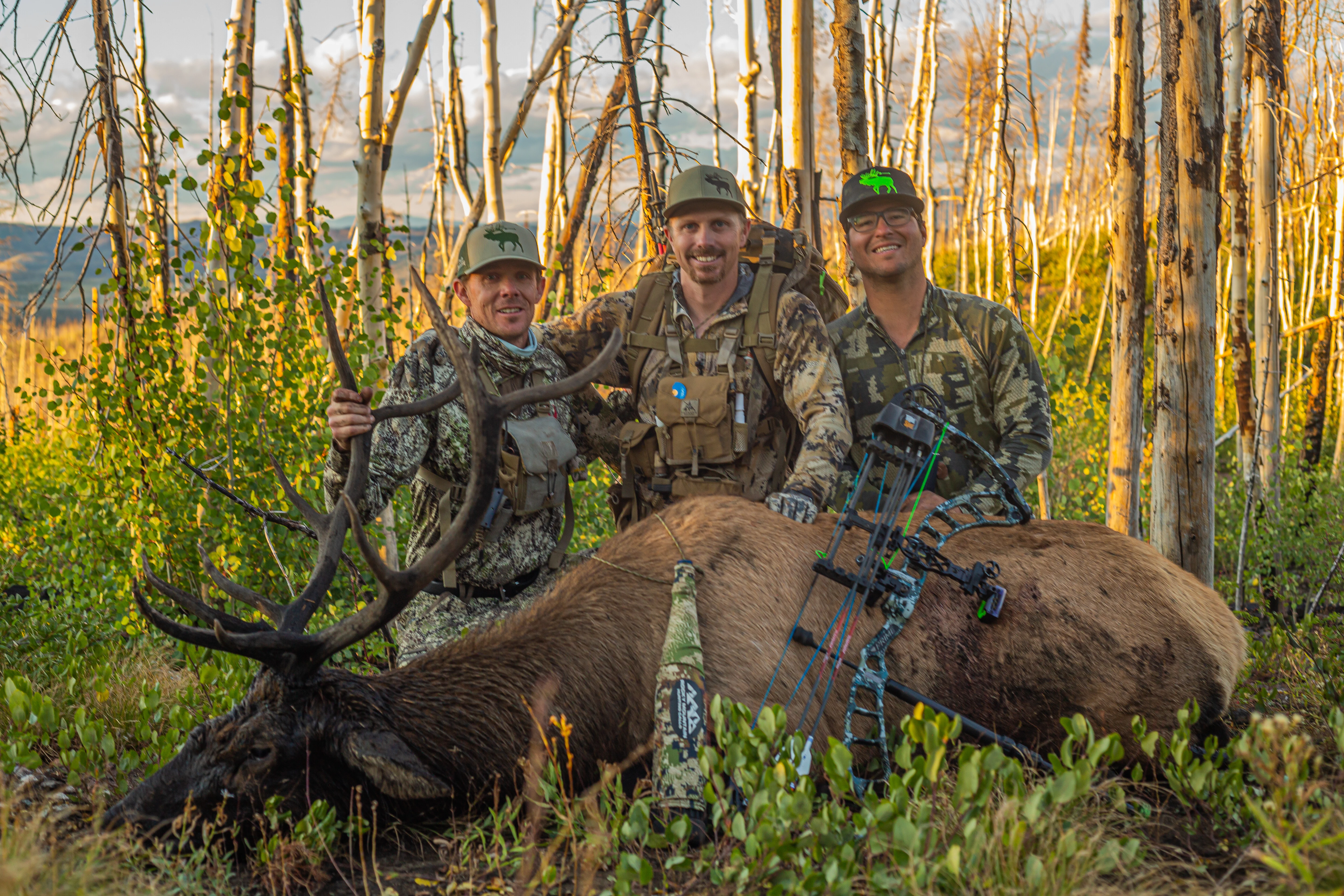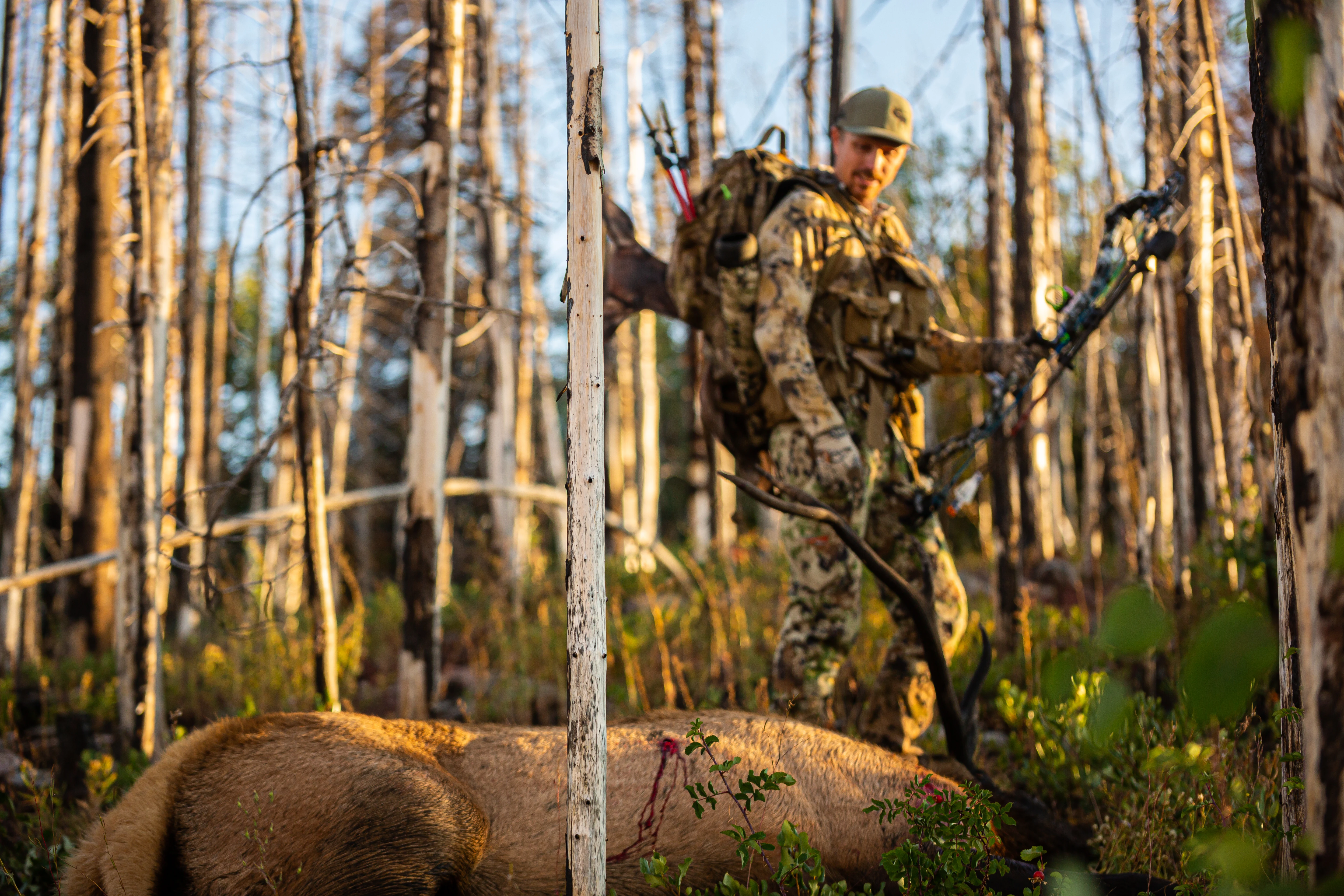For many Western states, September 1st marks the beginning of archery elk season. This time of year also coincides with the rut, when bulls bugle their heads off, roll around in the mud, and chase cows through the aspens. Hunting during the peak of the elk rut is one of the most exciting bowhunting experiences out there. But arrowing your first bull is going to take some work.
That's why I put together this short guide of five simple tips that will help you cut down the learning curve in the mountains. Most of the tactics involve hunting smarter rather than harder. Now, don't think you won't have to work harder than you've had before to tag a public land bull, because you will. But these tips will hopefully increase the chances of finding elk and getting into shooting range.

1. Get on the Same Elevation as the Elk
I typically put all my eggs in the morning hunt basket. Get in the woods an hour or two before dawn cracks and listen for bulges, or if you have a pre-determined locale in mind, get there before the elk do. Chasing elk is a bad idea. Calling a herd bull or even a satellite back and often down from where he came from is extremely difficult. Trying to close ground on a moving-up bull is even more challenging. You'll never catch him.
Bulls are more straightforward to call in and stalk when you're on the same general elevation as them. Typically, elk travel up to a flatter area in the timber in the morning. I call these "flatter" areas benches, and elk love them, primarily if they are in shaded north-facing timber.
Elk go to these areas to bed. The north-facing timber keeps big, rutting bodies cool. An elk will be less reluctant to come to a call when he doesn't have to make a massive incline or decline. Plus, these benches offer excellent spot-and-stalk opportunities.
2. Set Up in Front of Cover
We spend enough money on camo clothing and you should trust it. Always set up in front of cover. Elk have excellent eyesight but aren't good at picking up on stationary objects. If you sit in front of a bush, tree, rock, etc., and stay still, elk won't see you. I've had cows and bulls walk past me that I could have reached out and touched.
If you set up behind the cover, you won't be able to see the approaching bull, which means you'll miss every possible shot opportunity. When you get frustrated and try to lean around the brush, the bull will bust you. Get in front of the cover, pick your shooting lanes, and draw when you know the approaching bull won't pick you off.

3. Don't Walk Past Elk to Get to Elk
I killed my last three archery bulls within a mile of a road or trailhead. The go deep and far theory is acceptable; however, more hunters use it now than ever. This means more hunters are walking past elk to get to elk. You only need one bull.
Look for areas near roads or trailheads with an immediate ascent or descent. Massive climbs or drops often deter hunters. Mark locations while e-scouting. I pin at least 10 areas I want to investigate that allow me to pop in and out on my HuntStand app. If I find fresh rubs, droppings, etc., I hunt. If I don't, I move to the next area. This style of hunting allows you to cover more ground quicker.
It's also important to stay flexible on the hunt. I've spotted a juicy spot several times while driving down the blacktop, pulled my truck over, and gotten into elk.
4. Stay Quiet if the Bull is Hot
If you're a first-time elk hunter or one who's made only a few voyages West, any legal bull is a good one. However, if you're dead set on killing a herd bull, I advise you to the calling to a minimum on pressured public land elk. Herd bulls are often six years old or older. They have seen and heard it all. Hunt until you find a bull that wants to keep bugling on his own, then slip in like a ninja and run carbon through him.
This strategy works excellently as a buddy system. The caller's only job is to remain in one spot while the other hunter stalks in. If the bull goes quiet, the caller uses non-threatening locator bugles to get the bull to fire off again.
5. Hunt Over Water in the Afternoon
Locate as many water sources as you can while e-scouting and hunting. Sit-and-wait elk hunting isn't popular, but it can be deadly. Elk are big animals, and during the early season, as the rut starts kicking, they need to drink regularly. Bulls also wallow throughout the rut to thermoregulate and coat themselves in urine-drenched mud to let the ladies and challengers know they're around.
I love a small seep in a tiny meadow surrounded by timber where a bull can slip in, wallow, and quickly disappear. A treestand or a natural ground blind will work well in these situations. Afternoon hunts over water are best. Go after them in the morning and wait on them in the afternoon.


